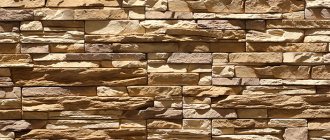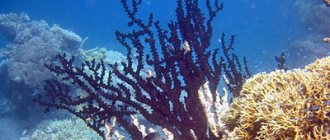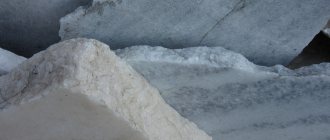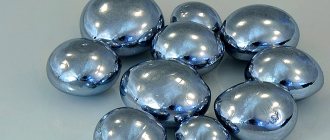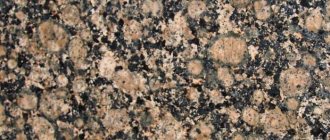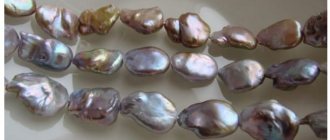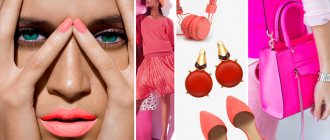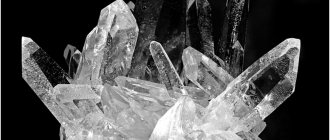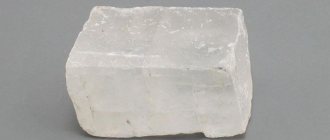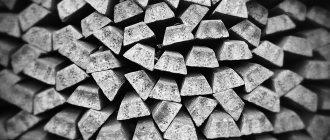According to their feeding method, corals are divided into three main groups: autotrophic (photosynthetic), heterotrophic (non-photosynthetic) and mixotrophic (combine autotrophic and heterotrophic properties).
Autotrophic corals (photosynthetics) feed primarily on symbiotic algae zooxanthellae, which belong to the dinoflagellates (Symbiodinium spp.). The nutrients supplied by zooxanthellae are produced through photosynthesis.
Heterotrophic corals (non-photosynthetics) obtain all their food from the environment, since they do not contain zooxanthellae. Due to the lack of symbiosis with zooxanthellae, they are also called aposymbiotics.
Mixotrophic corals contain symbiotic algae, but combine the feeding methods of autotrophic and heterotrophic corals.
In principle, symbiotic algae are not able to fully provide the coral with the nutrients necessary for the life and growth of the coral. Therefore, autotrophic corals, to one degree or another, also receive organic nutrients from the external environment, thereby acquiring certain properties of heterotrophic corals.
The diagram below shows the current classification of corals with reference to groups depending on their feeding method.
Diagram. Classification of corals and their feeding methods.
In the diagram, the group of photosynthetic corals includes both autotrophics (feeding primarily on zooxanthellae) and mixotrophics (feeding equally on zooxanthellae and the external environment).
There is also a division of corals according to their ability to form reefs into hermatypic (reef-forming) and agermatypic (non-reef-forming). Hermatypic species include Scleractinia, which contains zooxanthellae. Deep Scleractinians that do not contain zooxanthellae are agermatypic.
Coral stone: who suits it according to their zodiac sign
Since coral is a child of the ocean, it is believed that it is ideal for representatives of the Water element. Also, its bright palette resonates perfectly with Fire signs and enriches the life of Air. The properties of coral stone are suitable for almost everyone according to their zodiac sign, helping and supporting them on the path of life.
- Astrologers say that the stone is best compatible with the signs of Pisces and Cancer, and pink shades are recommended for the summer sign. The stone will be useful against blues and melancholy, give self-confidence and protect against diseases. However, the mentioned signs should be careful and not wear the stone constantly, since its side effect may be the “education” of capriciousness, adventurism and a thirst for adventure, as well as a lack of a sense of proportion.
- For Aries, Taurus and Gemini, the stone will bring color to life, will be an excellent travel companion, and will add spice to life.
- Coral will help Aquarius and Libra in communication.
- It will help Leos, Scorpios and Sagittarius to remain resilient.
Interestingly, coral gravitates towards the masculine side. Pink and white samples are considered feminine, and yellow, orange, red and blue corals carry an eager, determined masculine energy, so girls should wear red coral carefully - only occasionally and clean the stone with water.
However, many sources claim that the soft and living energy of corals is suitable even for children.
Autotrophic nutrition
Symbiotic algae receive inorganic compounds from the coral and the environment (carbon dioxide, bicarbonates, ammonium, nitrates, phosphates) and process them through the process of photosynthesis into organic molecules such as glucose, glycerol, fatty acids, amino acids, which are food for the coral , and for the zooxanthellae themselves. Nitrogen-fixing cyanobacteria also participate in the process of photosynthesis, supplying ammonia, which they produce from dissolved nitrogen. Those. Nutrients are exchanged between corals, zooxanthellae and bacteria.
Who is not suitable for coral?
According to astrologers, the stone should not be worn by Capricorns and Virgos. Their stable earthly energy comes into conflict with a living stone, which is why it can negatively affect their character.
RELEVANT: Magical and healing properties of tourmaline stone
Also, women should give up blue corals - they are considered a purely masculine stone, and wear red ones as a special decoration:
- for business meetings to increase determination, confidence, acumen;
- for holidays and dates to enhance sexual energy;
- for celebrations where the wearer is the center of attention, such as a birthday party.
It must be taken into account that strong masculine energy presents a personality like a magnet and attracts attention. Frequent contact can bring excessive effects: recklessness, aggressiveness, vanity.
Coral should not be worn by melancholic people; it is ideal for extroverts, active and public people.
Heterotrophic nutrition
Photosynthesis is not able to fully provide corals with sufficient nutrients necessary for the growth and reproduction of the coral. Therefore, corals are forced to resort, to one degree or another, to heterotrophic nutrition, namely, obtaining the necessary substances from the external environment. Corals can use a variety of organic particles as food, including living organisms. It must be taken into account that different corals are adapted to consume certain types of organic particles and living organisms. At the same time, the conditions in which the coral is kept are important. With heterotrophic nutrition, the main supplier of food for corals is the environment. Below are the main types of food consumed by corals in natural habitats.
Phytoplankton
As plant food, corals can use phytoplankton - microalgae with a particle size of 4-12 microns, which include diatoms, cryptophytes, and haptophytes. It has also been noted that some stony corals can consume Dictyota macroalgae as plant food, but this is not typical and is rather considered an exception.
Zooplankton
In the wild, zooplankton that corals can feed on include crustaceans such as copepods, amphipods, ostracods, mysids, worms such as polychaetes and arrow worms, and larvae of various animals.
Dissolved organic matter.
Dissolved organic matter is an important part of the nutrition of many corals. Glucose, urea, and amino acids, essential for life and growth, can be absorbed by corals from the water.
Detritus
It is a decay product of living beings, their organs, tissues and cells. Detritus particles are common on a coral reef. Detritus accumulates at the bottom in the form of sediment, but can also exist in suspension. It contains bacteria, protozoa, microscopic invertebrates, microalgae, and organic substances. For many corals, including those living at depth, it is a significant component of their nutrition.
Fish and small crustaceans
Corals with large polyps can eat small fish and small crustaceans whole. To do this, they use their large tentacles and stinging cells, cnidocytes.
Main deposits
Coral polyps grow into huge branching formations called reefs. There are three types of coral growths found throughout the earth:
- coastal - these are walls and “fields” of coral that cover sheer depressions or the ocean floor near the surface - where the waters get deeper;
- atolls are peculiar islands made of volcanic reefs, like a ring with a lagoon inside;
- Barrier reefs are bouldered coral colonies in mid-waters.
Corals do not like direct sunlight, under them the stones fade and the creatures die. At the same time, polyps need light for development. Therefore, they settle at medium depths in warm, salt-saturated waters.
The main coral deposits on the globe are located in the Pacific and Indian Oceans, as well as in the Mediterranean and Red Seas:
- The most expensive stones are mined in Italy.
- Valuable suppliers are the countries of Middle America and Australia.
- Massive deliveries are made by Japan, Taiwan and the Pacific Islands, where coral mining is considered one of the main types of fishing.
After extraction, the resulting stones are sorted. The precious part of them is sent for sale to collectors and jewelers, and the low-density “catch” is processed into medicinal powder. Thus, all mined stones are considered valuable and are actively used throughout the world.
Types of food and feeding of various corals
Soft corals Alcyonaria (photosynthetics).
They contain zooxanthellae, which through photosynthesis provide food for the coral. Excess zooxanthellae can also serve as food, entering the intestinal cavity and being digested. Corals can feed heterotrophically, consuming phytoplankton as well as dissolved organic matter. Popular Alcyonaria (photosynthetics) include: Cladiella, Clavularia, Cornularia, Lemnalia, Lobophytum, Sarcophyton, Sinularia, Tubipora musica, Xenia. When kept in an aquarium, in addition to feeding with zooxanthellae, they need additional feeding in the form of phytoplankton, frozen food for corals, artemia nauplii, and various planktonic foods.
Soft corals Alcyonaria (non-photosynthetic).
They do not contain zooxanthellae. They feed heterotrophically. Phytoplankton and dissolved organic substances are extracted from the environment. They can also feed on slow-swimming zooplankton that are small in size less than 300 microns. Common Alcyonarians (non-photosynthetics) include: Dendronephthya, Studeriotes. When kept in an aquarium, they require regular intensive feeding at least once a day. Live planktonic food, frozen coral food, Artemia nauplii, and various planktonic food are used as food.
Gorgonian horn corals (photosynthetics)
They contain zooxanthellae, which through photosynthesis provide food for the coral. Along with autotrophic nutrition, heterotrophic nutrition is used. They consume zooplankton and suspended detritus. Examples of gorgonians (photosynthetics) are: Plexaura flexuosa, Pterogorgia, Antillogorgia.
When kept in an aquarium, it is necessary to create sufficient lighting for the activity of zooxanthellae and provide additional nutrition in the form of artemia nauplii, frozen food for corals, and various planktonic foods.
Gorgonian Horn Corals (non-photosynthetic)
They do not contain zooxanthellae. They feed heterotrophically. Zooplankton, phytoplankton, dissolved organic matter, and suspended detritus are extracted from the environment. For some gorgonians, especially deep ones, detritus can be the main source of nutrition. Examples of gorgonians (non-photosynthetics) are: Swiftia, Ctenocella, Menella, Euplexaura.
When kept in an aquarium, the optimal food is Artemia nauplii, phytoplankton, frozen coral food, and various planktonic foods. They readily eat the eggs of invertebrates and fish.
Small polyp stony SPS corals
SPS corals are photosynthetic. In nature, colonies of various shapes and colors are created. They have small polyps on the calcium skeleton. They mainly feed autotrophically on symbiotic algae. They may also consume microplankton. The most popular corals in the aquarium hobby are: Acropora, Seriatopora, Pocillopora, Stylophora, Montipora.
They are very demanding regarding the conditions in the aquarium. It is necessary to maintain high water quality, provide intense lighting of a certain spectrum and create powerful water flows. They feed on zooxanthellae. To improve growth, it is advisable to feed with fine planktonic feed. You can use ready-made planktonic food for corals.
Large polyp hard LPS corals (photosynthetics)
In large polyp corals, when open, the skeleton is almost invisible. And only when the polyps hide is the hard base visible. The basis of nutrition consists of various planktonic organisms. They can feed on fairly large food objects. They contain zooxanthellae, which also provide nutrition to corals. Some species can release stinging tentacles at night and attack nearby sessile invertebrates. The most commonly used LPS corals in the aquarium hobby are Trachyphyllia, Caulastrea, Plerogyra, Fungia, Lobophyllia, Cynarina, Turbinaria, Favites.
When kept in an aquarium, LPS corals do not require strong lighting or intense current. They feed with the help of zooxanthellae and can eat small pieces of seafood (molluscs, crustaceans, squid, fish).
Large polyp stony LPS corals (non-photosynthetic)
They are heterotrophs, as they do not contain zooxanthellae. They usually live in shaded places. They often stay in caves and grottoes. They contain stinging cells in their bodies, which are used to capture prey. These are nocturnal corals that spread their hunting tentacles in the dark. They feed on plankton, detritus, crustaceans, fish and organic compounds contained in water. Species used in aquarium farming include Tubastraea, Dendrophylia, and Rhizotrochus.
When kept in an aquarium, they do not require strong lighting. The water flow is moderate. Taking into account the absence of symbiotic algae in the body of corals, they require intensive feeding with small crustaceans and small fish. Any frozen food with a particle size of no more than a few millimeters is also suitable. Feeding should be daily and plentiful. If necessary, feeding is allowed several times a day. Moreover, feeding is more effective in the dark, when the coral polyps are fully exposed.
Distichopora (fire coral).
They live in caves or shaded areas of reefs. Although distichopora have a rigid exoskeleton, they are hydroid polyps. They do not contain symbiotic algae. The basis of nutrition is animal food, primarily zooplankton. Polyps are very small, barely noticeable.
When kept in an aquarium, they feed mainly on zooplankton. The basis of the diet is Artemia nauplii, which it is advisable to release into the aquarium in the evening. Additional food can be provided by bacteria that multiply in organic debris at the bottom of the aquarium. To do this, it is necessary to periodically stir up the top layer of soil in order to lift particles of detritus containing bacteria into the water column.
The diagram below shows the different groups of corals in relation to their feeding method (autotrophic, heterotrophic), as well as to the categories of foods consumed in natural conditions. The height of the symbolic bars at the intersection of the coral group and the nutrition category corresponds to the average share of the product in the overall nutritional balance of the coral groups. The maximum height corresponds to 100%, the minimum to 0%.
Characteristics and use of stones
Noble coral, as the mineral is also called, differs in properties depending on its habitat: the density and hardness of the stone changes. The color of corals is not always red; its shades depend on the depth, algae, impurities, and water composition. There are about 300 species.
Corals are sensitive to temperature changes and acids. Under their influence they can crumble. The stone is fragile. It acquires its shine, smoothness, and attractiveness only after processing by craftsmen.
Due to its properties and uniqueness, noble coral has been popular among jewelers for many years. Most often, the tops of mineral branches are used for products. They are in harmony with gold and silver.
Gold jewelry with corals looks luxurious and expensive. Rings, brooches, pendants can be made in a variety of styles. They are often made in retro style.
Silver jewelry with coral has a more affordable price. You can purchase sets of earrings, brooches and necklaces. Pendants, pendants, and bracelets look beautiful.
The most popular mineral products are coral beads. They have always been considered a symbol of femininity and warmth. In ancient times, only the nobility wore them. Beads and bracelets are considered part of the national costume.
Classic coral beads are suitable for everyday outfits, but more interesting shapes can be worn to a party or celebration. It is better for girls to wear stones with a pink tint. Red beads look beautiful with a black dress, pink beads with floral print clothes, white beads with plain outfits. The mystery of the beads will attract attention to a woman, add zest to her image and make her beautiful.
Red coral beads
Red coral is also used in construction. For example, in Florida a castle was built from coral blocks. Many buildings use coral mortar. For construction, ignoble polyps and only those that have died long ago are used.
To prevent jewelry with corals from deteriorating, changing color or falling apart, treat it with care:
- avoid acids, chemicals, temperature changes, humidity, water, chlorine;
- put on clean skin after applying cosmetics, varnish, perfume;
- store separately from other jewelry in tissue paper or soft cloth;
- Clean from time to time with a damp cloth, do not forget to wipe dry.
Diagram. Nutrition of corals in natural conditions.
It should be noted that the nutrition and feeding of corals have not yet been fully studied, although there are many publications and monographs on this subject. The format of this article was intended to provide a general understanding of feeding and feeding practices for various groups of corals. In addition, the most important thing when considering this issue is to ensure the necessary conditions for keeping corals in the aquarium. You can familiarize yourself in more detail with the description of corals, the conditions of their maintenance and receive appropriate recommendations from specialists on choosing a particular type of coral to be stocked in an aquarium at the Aqua Logo company.
© Aqua Logo Evgeniy Konstantinov
Fields marked with * are required.
Magic properties
Already several thousand years ago, shamans and healers attached great importance to the power of corals. This stone is revered as having passed through the ages and is associated with wisdom and good health. Some people believe that coral enhances intuition, while others say that it helps rationally weigh decisions and evaluate circumstances. The magical properties of the coral stone are suitable for prophecies and fortune telling; it is believed that it is a witness to all milestones of history.
RELEVANT: Chrysoprase stone is a talisman of victory
Coral is worn as a talisman. It is suitable for active people who do not sit still, protects travelers on the road, wards off bad weather and troubles, and allows them to feel at home everywhere.
It is believed that coral protects health and the heart, stimulates the regeneration of the body: just as the coral polyps themselves are capable of budding, a person wearing a colored stone will be able to recover faster from illnesses and injuries.
Coral has dynamic energy, helps drive away the blues, activate various processes in life, speed up the resolution of matters, meet the right people and establish connections with them. It attracts good luck and protects when a person is in the spotlight. Stimulates creative notes, making it easier to accept change.
Light corals develop feminine qualities - tenderness, coquetry, flexibility of movements, help to learn to dance and sing. Bright corals, on the contrary, are good in “male” endeavors, give courage, determination, support high productivity and pronounced libido. In some rituals, porous corals were literally used as an erotic symbol of male power. When weapons were encrusted with corals, believing that they protected in battle.
Coral should be handled with care. Do not wear it constantly, otherwise it will “accelerate” the vital forces over the edge. This can lead to rash decisions, uncertainty, capriciousness, a sense of adventure, arrogance, and a false sense of permissiveness. It can also cause a physical echo: hypertension, arrhythmia, allergies, fever.
Corals are considered a talisman for the home, storing warmth and living energy in it. In addition, it is considered a good physical amulet. If coral, which is worn on the body for a long time, begins to become cloudy, stained or crumble, this indicates either difficult experiences or the presence of illness, since the body changes hormonal levels.
Coral can be worn not only as decoration, but also simply as protection, for example, in your pocket. It is believed that it is capable of drawing in negative experiences. Therefore, the pebbles need to be washed periodically.
How to wear and care
Corals are worn on the chest and neck area - where they are visible and where they can have a beneficial effect on the body. You can also choose bracelets and earrings. Coral is not afraid of large sizes - you can safely give preference to multi-layered beads or large brooches.
- Water signs are perfect for flowing jewelry - long and cascading beads.
- Fire signs can pay attention to stones of bizarre irregular shape.
- For air representatives, it is best to sharpen stones in a silver frame and give preference to pink, white and yellow stones.
Coral is washed in purified water without chlorine and chemicals, or, in extreme cases, in a light soap solution using a sponge or fleecy cloth. No additional cleaning methods should be used on delicate stone. In addition, the sensitive mineral must be hidden from direct sunlight to prevent it from fading.
Application in jewelry
To give the stone a noble appearance, it is polished and cleaned. Most often, corals are made into beads of smooth round or complex shapes, and also polished as cabochons. It is not customary to cut corals.
The stone is usually mined in small pieces up to 1.5 cm, so larger specimens are more expensive. Delicate work on inlaying valuable items is also highly expensive.
Most often, rosaries are made from corals, especially in India, as well as all kinds of beads, bracelets and earrings. Less often it can be found in combination with noble metals in rich products.
